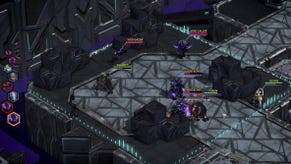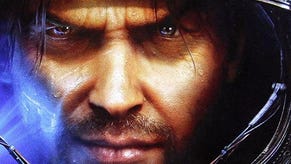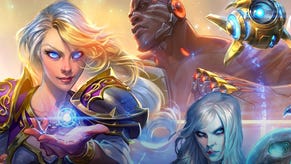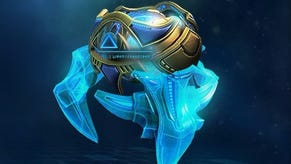StarCraft II: Wings of Liberty
The RTS takes flight.
"StarCraft II is fast." The first words I wrote about Blizzard's real-time strategy sequel, almost two and a half years ago, may well have been an exercise in stating the profoundly obvious - but they bear repeating all the same. It still comes as something of a shock: the urgent, breathless acceleration playing this game requires of your fingers and your brain, darting around the map, micro-managing, multitasking, watching your hastily-improvised tactics blossom or collapse in busy, laser-scattered chaos that always seems a beat ahead of you.
But there's another rhythm building in the background, behind every mission and skirmish, and this one is very, very slow. Conscious of its intimidating complexity and speed - of the yawning gulf between the curious, casual World of Warcraft player who will pick it up on a whim and the 300-clicks-a-minute eSports pro who's been training for it since childhood - Blizzard has built StarCraft II as an epic crescendo: a parabolic ascent through multi-layered campaign, challenge, skirmish and co-operative modes and then multiplayer ladder competition that stretches off into the vanishing-point distance.
One week in, and I'm barely in the foothills of that climb. It is an immense game - and this is just Wings of Liberty, the first part of the StarCraft II trilogy. Not to be outdone in thinking big by the guys across the hall, Blizzard's strategy team has delivered an RTS on an MMO scale.
Even with the time - seven years since Warcraft III: The Frozen Throne - and the bottomless resources they've had, that's not something you can do by brute force. A strategy game with thousands of units and maps and hundreds of hours of grind would just be unwieldy and overbearing. What's so clever about StarCraft II is that it's been built big through technology, finesse, depth, insane attention to detail and, above all, structural brilliance.
Your first step on the StarCraft II journey is Wings of Liberty itself, the campaign mode told almost entirely from the point of view of the Terrans, one of the game's three races. Downtrodden space-faring humans piloting chunky, battered retro-futuristic mechs, the Terrans led by resistance hero Jim Raynor are caught in a three-way intergalactic struggle between former allies turned evil empire the Dominion, rapacious biomechanical menace the Zerg, and high-tech, high-church alien zealots the Protoss.
Wings of Liberty's installer helpfully recaps the important plot points of StarCraft and the Brood War expansion, including love interest Kerrigan's betrayal and transformation into the Zerg Queen of Blades. It's relatively easy to pick up, mind; though Wings of Liberty exemplifies Blizzard's easy way with grandstanding reversals and epic sweep, StarCraft hasn't got anything like as tangled up in geopolitics and lore as the Warcraft series has. Fans of trad space opera will be well satisfied by this thumping yarn, especially in its occasional, spectacularly well-made CG cut-scenes.
It's not as well-rounded as Warcraft on the human scale, however. There is much to love about the lavish point-and-click interludes aboard Raynor's ship, during which you buy unit upgrades and screen-filling characters swap lines (especially the Cantina jukebox spinning scratchy covers of Raw Power and Rumble; less so the arcade machine that proves the 2D shmup is one genre Blizzard can't do). But the dialogue often falls flat and the characters are either clichéd, banal or both - Raynor in particular, sadly. Still, Blizzard has always pitched its storytelling tone broad and refused to take it too seriously, and the spit-and-sawdust aroma of the Wild West ambiance helps disguise the whiff of cheese.
Moreover, the big-picture matters little, because it's the individual tales told by Wings of Liberty's fantastic missions that really stick in the memory. Penetrate the production values and you'll find level design and scripting of such quality, variety and invention that it easily sets new standards for single-player RTS campaigns.









